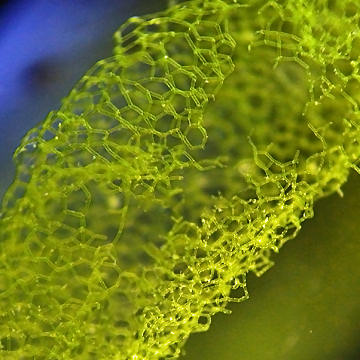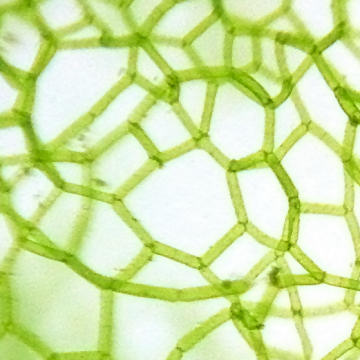It would seem that the subject of my posts keep getting smaller and smaller. These images are of a common green algae (phylum Chlorophyta) commonly known as Water Net. It gets its name from the pentagonal or hexagonal branching pattern of the filaments making up the body (thallus) of the algae. These specimens came in on a sample of Chara, another green algae that is considered to be the closest living relative to plants. I took a sample of the Chara out the other day to photograph and left the sample in a dish of water under some lights. After about a week these little green ‘bubbles’ started appearing and have continued to get progressively larger.

I was really curious what this stuff was but couldn’t really find anything that fit the description. I was already aware that water net was growing in the tank where I am keeping the Chara, but the filaments on these were not visible to the naked eye. It wasn’t until I got out a hand lens that they became apparent.

Apparently they can form these somewhat spherical colonies that just keep expanding as the thallus divides. I got one good closeup showing how each filament is connected to two other filaments, which creates the unique branching pattern and allows the colony to take on a 3-dimensional form.

Algae in the genus Hydrodictyon are isogamous (gametes all alike) and the cells are coenocytic (multinucleate). Dictyo is Greek for net-like, so the genus means the same as the common name.
I have recently collected some algae from Lake Dardanelle just outside of Russellville Arkansas. The sample collected looks and forms the same structures and the one you’ve posted above. The collected algae is a very small amount but I chose a small amount to limit the amount of contaminates of other species. After collection I isolated the sample and rinsed well in a nutrient solution and then transferred the sample to a three litter growing chamber under some lights. I cannot find much research that has been done on this species of algae. If you have any good information or sources of information for this species I would be pleased if you would provide any. Thank you.
Comment by Robert — July 3, 2012 @ 19:52